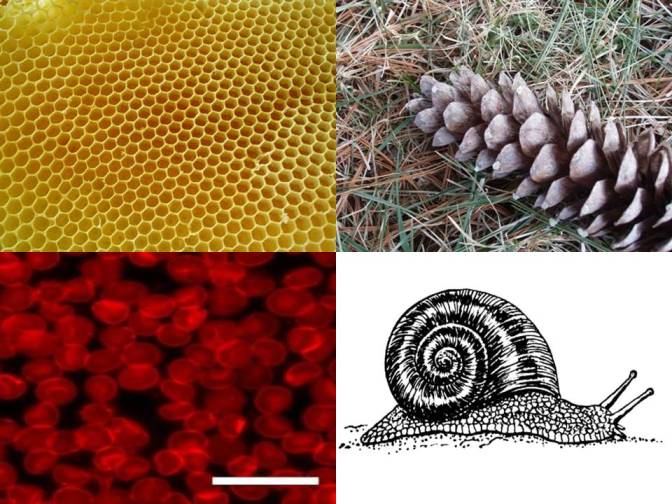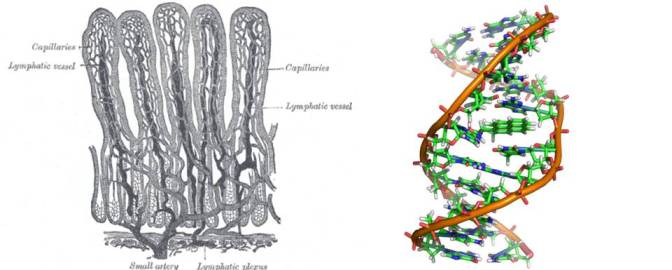Or search by topic
Number and algebra
Geometry and measure
Probability and statistics
Working mathematically
Advanced mathematics
For younger learners
Natural Shapes



Certain biological creations exhibit a striking regularly repeating structure - either 3-dimensional or planar. Here are some pictures of interesting biological structures:



Can you see any regularly repeating structural elements in these images? Classify them as fully as you can.
Can you identify what each image represents? How does its structure enable it to perform its function?
Can you group these structural forms into categories? Can you think of other examples of natural objects which show the structural characteristics common to the members of each group?
Notes and background
Working out how molecules pack together can give important insights into their properties. There are many different possibilities. DNA wraps together in the familiar and straightforward double-helical configuation whereas complex molecules such as proteins pack, or fold, together in very intricate ways.
You may also like
Big and Small Numbers in Biology
Work with numbers big and small to estimate and calulate various quantities in biological contexts.

